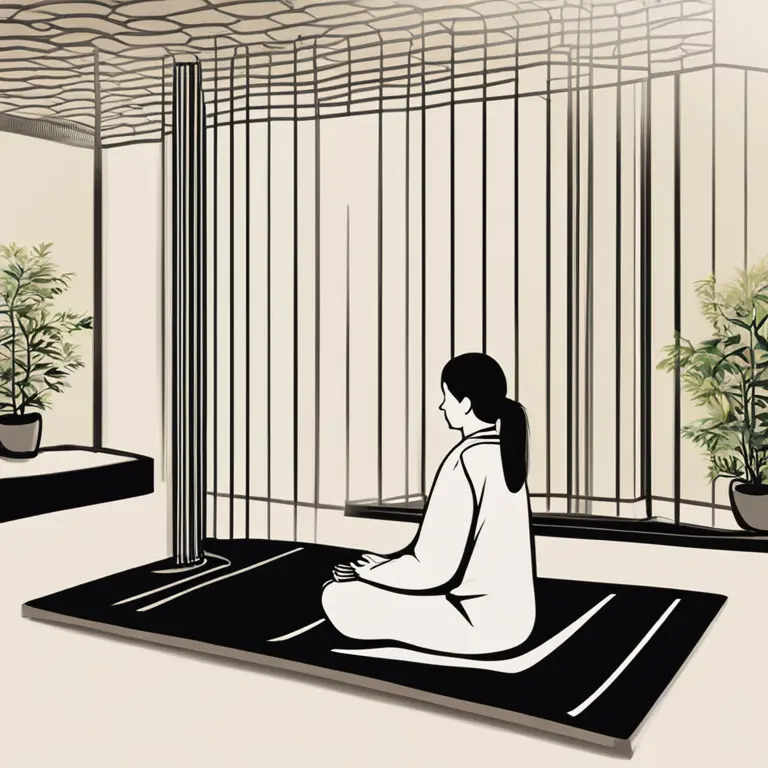
Easing Anxiety with Mindful Meditation Practices
Discover effective meditation techniques to manage anxiety, elevate inner peace, and find balance in today's fast-paced world.
article by Hina Kurosawa
Introduction to Meditation and Anxiety
Meditation has been a cornerstone in the quest for tranquility and self-awareness for centuries. In our modern era, characterized by constant stimulation and stress, meditation stands out as a tried and true method to alleviate anxiety. With a blend of ancient wisdom and contemporary neuroscience, we recognize meditation as not only a spiritual exercise but also a practical tool for mental health management. In this discussion, we'll explore several meditation techniques specifically tailored to counteract the effects of anxiety—offering you a path towards a calmer, more centered existence.

Grounding with Breathwork
One of the most accessible forms of meditation centers around the practice of breathwork. This involves observing and consciously altering breathing patterns to induce relaxation. Techniques such as the 4-7-8 method, in which you inhale for four counts, hold for seven, and exhale for eight, are instrumental in slowing down the heart rate and promoting a sense of calm. Integrating breathwork into your daily routine can serve as a quick and effective antidote to the onset of anxiety symptoms.

Mindfulness Meditation
Mindfulness meditation encourages practitioners to remain present and fully engaged with their current experience, without judgment. By focusing on the now—be it through the sensations in your body, the cadence of your breath, or the sounds around you—you train your mind to let go of distressing past events and future worries. This non-reactive state allows anxiety sufferers to break the cycle of chronic stress and the apprehension of potential stressors.

Body Scan Relaxation
The body scan technique is a form of meditation where you mentally traverse through various parts of the body, detecting and releasing tension. Starting from the toes and moving upwards, this practice not only deepens body awareness but also highlights the mind-body connection. By progressively relaxing each area, individuals can alleviate the physical symptoms of anxiety, leading to a more relaxed and peaceful mental state.

Mantra and Affirmations
For some, the silent approach to meditation can be challenging, especially when the mind is fraught with anxious thoughts. Using a mantra or positive affirmations can provide a focal point for the mind. Repeating a calming word or phrase, such as "peace," "calm," or "all is well," can soothe the nervous system and instill a sense of stability and reassurance.
Guided Visualization
Guided visualization, or mental imagery, involves transporting oneself to a 'safe haven' through vivid and peaceful pictures conjured in the mind. Whether it's a serene beach scene or a quiet forest walk, immersion in these calming visuals can distract from anxiety-provoking stimuli and elicit a relaxation response in the body.
Connecting with Nature
While not a meditation technique per se, the practice of spending time in nature, or 'forest bathing', has a meditative quality that can significantly lower anxiety levels. The natural environment stimulates the senses in a gentle way, allowing for a meditative experience that aligns individuals with the rhythmic patterns of the earth—offering a profound sense of peace and grounding.
Published: 2/12/2024
Modified: 2/12/2024
More predictions
Come back here soon to learn more about yourself and your future


The Spectrum of Meditation Practices
Delve into the diverse world of meditation techniques to enhance mindfulness, focus, and tranquility in your daily life.


Diverse Meditation Techniques for Modern Practitioners
Discover a range of meditation methods suited for contemporary lifestyles, offering pathways to inner peace and clarity.


The Spectrum of Meditation Practices for Inner Harmony
Delve into the various meditation techniques designed to foster mindfulness, tranquility, and deeper self-awareness.